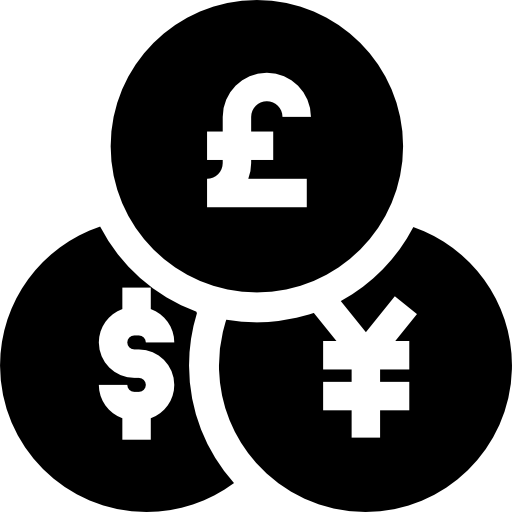Currency Converter

About the Currency Converter Tool
In an increasingly globalized world, understanding and managing different currencies is more important than ever. The Currency Converter tool is a vital online utility designed to simplify currency conversion, making it an essential resource for travelers, online shoppers, and business professionals alike. By utilizing real-time exchange rates sourced directly from exchangerate-api.com, this tool ensures that you receive the most accurate and up-to-date conversion results, helping you make informed financial decisions with confidence. Whether you’re planning a trip abroad, shopping on international websites, or handling cross-border business transactions, this tool is tailored to meet all your currency conversion needs with precision and ease.
Currency values fluctuate constantly due to a variety of economic factors, making it crucial to have a reliable tool that can provide real-time data. The Currency Converter tool not only allows you to convert amounts between different currencies accurately but also gives you the peace of mind that comes with knowing you are working with the latest information. This tool is designed with user-friendliness in mind, offering a seamless experience for users of all backgrounds, from seasoned finance professionals to casual travelers. With its broad range of supported currencies and intuitive interface, the Currency Converter tool is your go-to solution for all currency-related needs.
Global Currency Units
Currencies are the backbone of global trade and finance, each playing a crucial role in the economic stability and international standing of their respective countries. Understanding the value of one currency relative to another is essential for anyone involved in international dealings. Below is a detailed overview of some of the world’s major currencies, each with its own unique significance in the global economy:
- US Dollar (USD): As the official currency of the United States, the US Dollar is widely regarded as the global benchmark for currency. It is the most traded currency in the world, often used in international transactions and held as a reserve currency by many central banks.
- Euro (EUR): The Euro is the official currency of the Eurozone, comprising 19 of the 27 European Union member states. It is the second most traded currency globally and is known for its stability and strong presence in international markets.
- British Pound (GBP): Known for its historical significance and strength, the British Pound is the official currency of the United Kingdom. It is one of the oldest currencies still in use and remains a major currency in global finance.
- Japanese Yen (JPY): The Japanese Yen is the official currency of Japan and is widely used across Asia. It is a key player in the forex market, known for its liquidity and frequent use in carry trades.
- Canadian Dollar (CAD): The official currency of Canada, the Canadian Dollar is closely tied to commodity prices, particularly oil. It is a popular currency in global trade, especially within the Americas.
- Australian Dollar (AUD): The Australian Dollar is the official currency of Australia and is heavily influenced by the country’s export market, particularly minerals and agriculture. It is widely traded in the Asia-Pacific region.
- Swiss Franc (CHF): Known for its stability and safety, the Swiss Franc is the official currency of Switzerland. It is often considered a “safe haven” currency, especially during times of global financial uncertainty.
- Chinese Yuan (CNY): The Chinese Yuan is the official currency of China, the world’s second-largest economy. As China’s influence in global trade grows, so too does the significance of the Yuan.
- Swedish Krona (SEK): The Swedish Krona is the official currency of Sweden and reflects the strength of the country’s robust economy. It is commonly traded in European markets.
- New Zealand Dollar (NZD): The official currency of New Zealand, the NZD is closely linked to the country’s export sectors, particularly agriculture and tourism.
- Mexican Peso (MXN): As the official currency of Mexico, the Mexican Peso is the most traded currency in Latin America and plays a significant role in regional trade.
- Singapore Dollar (SGD): The Singapore Dollar is the official currency of Singapore, a leading financial hub in Asia. It is known for its stability and is widely used in regional trade.
- Hong Kong Dollar (HKD): Pegged to the US Dollar, the Hong Kong Dollar is the official currency of Hong Kong, an important financial center in Asia.
- Norwegian Krone (NOK): The Norwegian Krone is the official currency of Norway and is influenced by the country’s significant oil reserves.
- South Korean Won (KRW): The South Korean Won is the official currency of South Korea, reflecting the country’s strong industrial base and global technological leadership.
- Turkish Lira (TRY): The official currency of Turkey, the Turkish Lira is crucial in regional trade and has a dynamic exchange rate influenced by the country’s economic policies.
- Russian Ruble (RUB): The Russian Ruble is the official currency of Russia, a major global exporter of natural resources such as oil and gas.
- Indian Rupee (INR): The official currency of India, the Indian Rupee is the currency of one of the world’s fastest-growing economies and a major player in global markets.
- Brazilian Real (BRL): The Brazilian Real is the official currency of Brazil, South America’s largest economy, and a key currency in regional trade.
- South African Rand (ZAR): The South African Rand is the official currency of South Africa, the continent’s most industrialized nation and a key player in African trade.
- Philippine Peso (PHP): The Philippine Peso is the official currency of the Philippines, a significant economy in Southeast Asia.
- Czech Koruna (CZK): The Czech Koruna is the official currency of the Czech Republic, a key economy in Central Europe.
- Indonesian Rupiah (IDR): The Indonesian Rupiah is the official currency of Indonesia, the largest economy in Southeast Asia and a major global player in commodities.
- Malaysian Ringgit (MYR): The Malaysian Ringgit is the official currency of Malaysia, a rapidly growing economy in Southeast Asia.
- Hungarian Forint (HUF): The Hungarian Forint is the official currency of Hungary, a member of the European Union, used primarily in Central Europe.
- Icelandic Krona (ISK): The Icelandic Krona is the official currency of Iceland, known for its unique economy driven by renewable energy and tourism.
- Croatian Kuna (HRK): The Croatian Kuna is the official currency of Croatia, used in the Balkans and reflecting the country’s growing economic ties with the European Union.
- Bulgarian Lev (BGN): The Bulgarian Lev is the official currency of Bulgaria, a country with close economic ties to the Eurozone.
- Romanian Leu (RON): The Romanian Leu is the official currency of Romania, reflecting its status as a growing economy in Eastern Europe.
- Danish Krone (DKK): The Danish Krone is the official currency of Denmark, closely tied to the Euro and used in a stable Scandinavian economy.
- Thai Baht (THB): The Thai Baht is the official currency of Thailand, a major player in tourism and regional trade in Southeast Asia.
- Polish Zloty (PLN): The Polish Zloty is the official currency of Poland, a major economy in Eastern Europe with strong ties to the European Union.
- Argentine Peso (ARS): The Argentine Peso is the official currency of Argentina, a significant economy in South America with a dynamic exchange rate.
- Chilean Peso (CLP): The Chilean Peso is the official currency of Chile, a stable economy in South America with significant trade ties.
- Colombian Peso (COP): The Colombian Peso is the official currency of Colombia, a major economy in the Americas known for its coffee exports.
- Egyptian Pound (EGP): The Egyptian Pound is the official currency of Egypt, a key player in the Middle East with a rich history in global trade.
- Israeli Shekel (ILS): The Israeli Shekel is the official currency of Israel, a country with a strong and innovative economy in the Middle East.
- Kuwaiti Dinar (KWD): The Kuwaiti Dinar is known for being one of the highest-valued currencies in the world, reflecting the wealth of Kuwait’s oil-based economy.
- Nigerian Naira (NGN): The Nigerian Naira is the official currency of Nigeria, Africa’s largest economy and a major player in the oil market.
- Pakistani Rupee (PKR): The Pakistani Rupee is the official currency of Pakistan, a significant economy in South Asia.
- Qatari Riyal (QAR): The Qatari Riyal is the official currency of Qatar, reflecting its wealth and economic strength in the Gulf region.
- Saudi Riyal (SAR): The Saudi Riyal is the official currency of Saudi Arabia, a global leader in oil production and an influential economy in the Middle East.
- Taiwan Dollar (TWD): The Taiwan Dollar is the official currency of Taiwan, a major economy in Asia known for its electronics and manufacturing industries.
- Ukrainian Hryvnia (UAH): The Ukrainian Hryvnia is the official currency of Ukraine, reflecting its economic ties with Eastern Europe.
- Vietnamese Dong (VND): The Vietnamese Dong is the official currency of Vietnam, a rapidly growing economy in Southeast Asia.
Benefits of the Currency Converter Tool
The Currency Converter tool is packed with features that make it a must-have for anyone dealing with international currencies. Here’s what sets it apart:
- Quick and Accurate Currency Conversions: With real-time exchange rates, you can trust that your conversions are precise, reflecting the latest market conditions.
- User-Friendly Interface: The tool is designed with simplicity in mind, making it accessible to everyone, whether you’re a seasoned financial expert or just need to convert currencies for travel.
- Supports Multiple Currencies: With a vast range of global currencies available, you can easily convert between virtually any two currencies in the world.
- Time-Saving: Say goodbye to manual calculations. The tool delivers instant results, allowing you to focus on more important tasks.
- Accessibility: The Currency Converter tool is available online, meaning you can use it anytime, anywhere, whether you’re on your computer, tablet, or smartphone.
How to Use the Currency Converter Tool
Using the Currency Converter tool is as straightforward as it gets. Follow these simple steps to get your conversions:
- Select the Source and Target Currencies: Start by choosing the currencies you want to convert from and to using the dropdown lists. The tool supports a wide range of currencies, giving you the flexibility to convert between any major or minor global currencies.
- Enter the Amount: Input the amount you wish to convert in the source currency field. The tool will handle the rest, ensuring an accurate conversion based on the latest exchange rates.
- View the Converted Amount: The converted amount will automatically appear in the target currency field, giving you immediate insight into the value of your money in another currency.
- Reverse the Conversion: If needed, you can also enter an amount in the target currency field to see the equivalent amount in the source currency. This feature is especially useful for comparing prices and understanding cost differences between currencies.
- Check the Exchange Rate: The tool also displays the current exchange rate and the date and time when it was last updated, ensuring that you are working with the most accurate and up-to-date information.
FAQs
- Q: What currencies are supported?
A: The tool supports all major global currencies, including USD, EUR, GBP, JPY, CAD, AUD, and many more, covering a wide range of global needs. - Q: Is the exchange rate updated in real-time?
A: Yes, the exchange rate is fetched from exchangerate-api.com in real-time, ensuring that your conversions are based on the latest data available. - Q: Can I use this tool for financial transactions?
A: While this tool provides accurate conversions for reference, it is recommended to consult with financial institutions for actual transactions. - Q: Is there a limit to the amount I can convert?
A: No, you can convert any amount, whether large or small, using this tool, making it versatile for both personal and professional use. - Q: Is the tool free to use?
A: Yes, the Currency Converter tool is completely free to use, offering a valuable service without any cost.
The Currency Converter tool is just one of the many free resources available to help you manage your finances and understand global currencies. For more tools designed to simplify your life and enhance your financial literacy, visit Tool Stack Central. Whether you’re converting currencies for travel, business, or personal finance, our tools are here to help you navigate the complexities of the global economy with confidence and ease.

